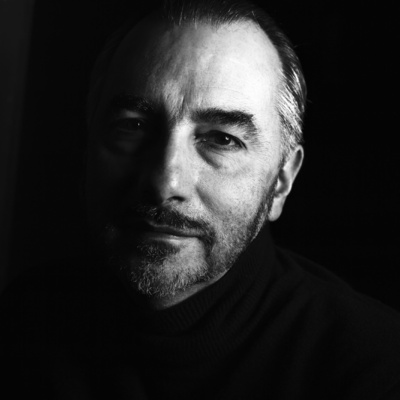Entre Chien et Louves: How Cirque Leroux Looks to the Future
In the immortal words of Søren Kierkegaard, “Life must be lived looking to the future, but it can only be understood by turning to the past.” In this review, Pascal Jacob explores the ways that Entre Chiens et Louvesby Cirque Leroux has done just that.

Have you ever dreamed of transforming a department store into a unique space-time invaded by acrobats? Cirque Leroux did that! Responding a year ago to an invitation from Le Bon Marché, the Parisian storethat inspired Emile Zola’s novel Au Bonheur des Dames, the company quickly imagined a strong and theatrical scenographic concept to back up a story of human lives that mixes three eras, three couples. But the border between them is as light as a mist of perfume… probably because, during the day, this amazing place sells all the rarest fragrances…
At eight o’clock, three nights a week, when the last customers of the day leave the store, the counters magically disappear to make room for rows of seats, installed in front of a stage and a high whitewood facade. An hour later, a few hundred spectators are faced with eight generous, virtuoso, and winning acrobats andready to live out a very special experience, ready toembark on a powerful and sensitive show that will shake and move them for nearly an hour and a half.
Everything is intelligent about this creation, shaped for an extraordinary space but leaving nothing to chance in terms of the writing and fluidity of sequences. While simple in appearance, the decor is actually an impressive piece of theatrical machinery, with a particularly clever way of playing on volumes and surfaces. Sometimes the audience has the impression of being faced with what looks like a giant piece of origami, each side of which bends or unfolds, becoming the pretext for a succession of sequences that merge theater and acrobatics with simplicity.The theatrical dimension, still very present in Cirque Leroux’s vocabulary since The Elephant in the Room, is reinforced by the narrative thread that links successive scenes together and chisels into them both depth and lightness. Subtly implemented time-shifting and distancing effects on the costumes strengthen the theatrical convention while also fully justifying it: the back-and-forth between different eras feels, paradoxically, totally natural, and offers the audience reasons to become attached to one character or another.
This is another essential aspect of the company’s work: giving real weight to those performers who might elsewhere be used only as simple silhouettes, and thus forging them into real circus actors. This nuance is crucial for a project wherein their proximity to the audience requires the performers to give another level of intensity to their looks and poses. Each of the eight performers plays their score and agrees with their partners according to the situation, creating a choral show with multiple twists. The spectator immediately accepts the conventions of play and becomes more attentive to the meandering story that develops before their eyes. At the same time witness to and actor in tender or ardent episodes, they flirt and are surprised, fall in love and come to hate, reassure and attach themselves to the characters—experiencing alongside them the torments that agitate them.
Poetry is never absent from Cirque Leroux’s creations, but here it plays out with an unprecedented sensuality that gives the piece a very particular character.Bodies singular and versatile are paired with George Friedrich Handel’s Sarabande (HWW 43), a piece of music that moves by itself, yet looks to have been written for these performers.This reference to the Stanley Kubrick film Barry Lyndon is probably not accidental, as the ghosts of Ryan O’Neal and Marisa Berenson seem to float around the characters played by Mathilde Jimenez and Tristan Nielsen. A particularly effective counterpoint to the movement, the classical musical choices become tangible frames of sound that intuitively match Alexandra Strliski’s original compositions and resonate well with the energy communicated by the eight physically engaged acrobats throughout the performance. The acrobatic sequences accentuate the dense exchanges between the characters and affirm the strong idea of the show, mutual support and the embellishment of differences. Conceived as a tribute to collective memory, this creation is at its heart a look at societal change and the idea of a perfect world; the hope of living together in tolerance, benevolence, and acceptance of the other that irrigates, sometimes with difficulty, the entire planet.
In the end, the troupe offers itself the luxury of an unprecedented apparatus—one of unexpected proportions in such a space—which oscillates between a double Chinese pole, a balance wheel, and a giant hourglass. Its vertical structure becomes a slight supportfor two stupendous colonnes à quatre that stand out as the ultimate achievement in an acrobatic course that has been generous in its effects, where artists share and give everything without limits. An immediate and spontaneous standing ovation is the natural conclusion of a creation as strong as it is elegant—a trait that definitely reflects those who designed it.
All images are courtesy of Cirque Leroux. ... Do you have a story to share? Submit your news story, article or press release.










